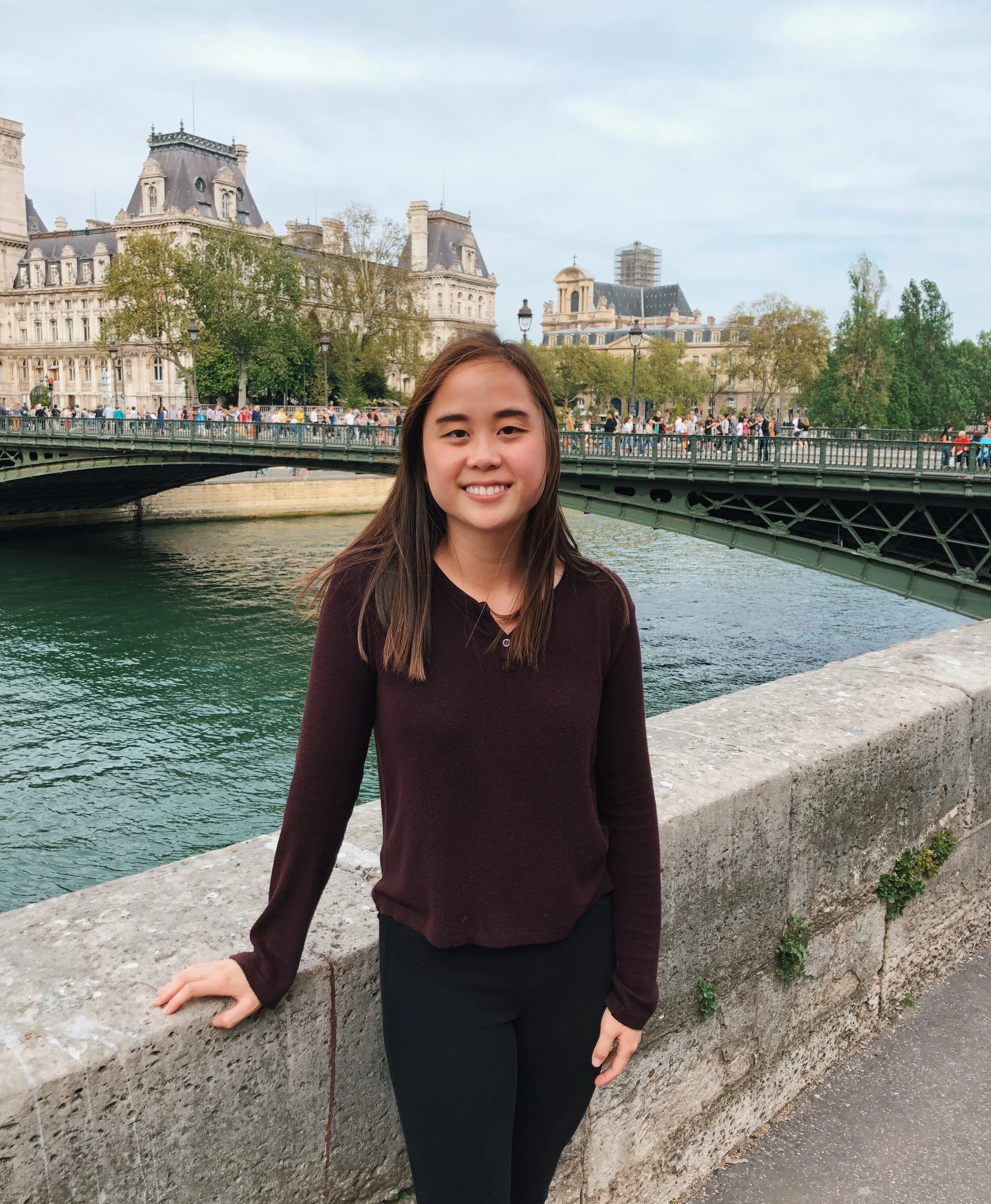I am Lilas Cuby de Borville, a former student of the Panthéon-Sorbonne in Paris, in Management of artistic and cultural projects at their department of Art and Aesthetics. I am currently working at the Biennale de Lyon and as an Associate Interviews Producer for The Creative Process. Having participated in the inaugural exhibition of The Creative Process at the Sorbonne, I am fascinated to see how it has expanded to include artists of many disciplines. Conversations with artists are always illuminating because they help us understand so many things which may not be immediately apparent, and I come to appreciate my role as a young curator and cultural translator.
I recently anchored the podcast of the interview with artist April Gornik. Looking at April’s oil paintings and large charcoal pieces, I am moved by what is happening. There is a sort of peaceful tension.
The large scale of her artworks, the fact that they are low hanging and often have no frame, all those factors naturally lead to an immersion in the atmosphere of the landscape that April is depicting, in her precise universe. In front of these paintings, we always hesitate, not knowing, “Is the weather getting darker or lighter ?”, “Are we right after a storm, slowly disappearing, or are we, in the moment of the painting, at the crucial time of the storm about to happen”?
It is April Gornik’s talent that she can create suspended moments like these and make us dive profoundly into these ambivalent atmospheres. The tension is always discreet, but truly present, underlying all her work. It is less about the contemplation of several artworks and their technique than it is about diving into one's vision and slowly immersing yourself in this world, this landscape, listening to what these “unpeopled dramatic landscapes” tell us.
I was fascinated to learn about her process and to hear that, to some extent, she considers that she is not responsible for the final effect of her paintings : she knows what happens in the studio, but not beyond. The organic function of art and what arises out of “happy accidents” is interesting to me, as well as how a painting comes together and reaches past its original intention. That it’s not about reproducing reality, but more about working with imagination and the intimacy between her and those landscapes.
She has been to these places, observed and taken photographs of many locations, but once she is working on painting these places, she does so by the way of an intimate mediation, which has a lot to do with emotion and memories. As I myself grew up surrounded by landscapes - the ones of the southwest of France - I am also deeply convinced that a landscape is not only a large area filled by nature, neither a fixed frame. Landscapes tend to intensify our feelings and emotions. And by living with them, or looking at them for enough time, you also learn to discover your own sensitivity because the landscape gives you back, as a reflection, the image of what you are at the precise moment when you are looking at it.
The dialogue between the real and the imagined is strong in Gornik’s work. Sometimes her paintings are inspired by something else: like this painting she did from a book she read. She kept in mind the description of the way the sun was coming up, with a peculiar projected shadow, and created a painting from words she read.
She is strongly inspired by the 19th century landscape painters like Monet and his landscapes which she says “open up your soul”. April Gornik noticed that she works with landscapes that are “important to [her] for some reason”. So it is not about the territories that she is depicting in themselves, but more about her vision of the world. And as I see her work and listen to various community initiatives she is involved in, I understand that she is an artist who cares very much, about nature, about people, about places. In a period when caring and noticing is something we often don’t take time to do, she has created paintings which are interactive: a place for her and other people to “fully exist”. As Gornik says, she wants to “allow people to project to the world by themselves”.














































































